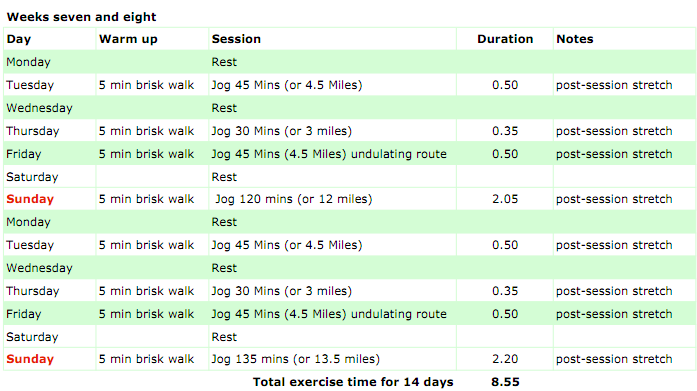Heart Rate Training: The Importance of Resting Heart Rates and Heart Rate Reserve
Monitoring heart rate activity is one of the easiest ways to measure changes in your aerobic capacity and get a sense of your overall progress while training. Primarily, you should be familiar with your resting heart rate and typical heart rate recovery after a workout.
This isn’t an unfamiliar concept to runners, especially with many training programs prescribing heart rate zones that are meant to optimize performance. Yet, not every runner is aware of how target heart rate zones are calculated and the vast majority of generic training plans calculate it the wrong way.
Resting Heart Rates and Cardiac Output
Your resting heart rate is the number of times your heart beats in one minute while you’re relaxed and at complete rest. It has an inverse relationship with your stroke volume, the amount of blood your heart can pump with each contraction measured in mL/beat. That means, the lower your resting heart rate, the higher the stroke volume.
Consider two individuals with vastly different resting heart rates: a sedentary person who is at 85bpm at rest and a frequent runner who is at 45bpm at rest. The sedentary person can only remain at rest at 85bpm, whereas the frequent runner can probably walk or jog at 85bpm, because they have a higher stroke volume. The frequent runner is more efficient at pumping blood with each contraction and, they also have a higher cardiac output.
Cardiac Output = Stroke Volume x Heart Rate
Over time, performing a lot of endurance training will gradually lower your resting heart rate…
Notice that this means resting heart rate will vary greatly between individuals so it’s more important to pay attention to relative changes to your own resting heart rate rather than comparing it with others. Over time, performing a lot of endurance training (whether long slow distance runs or speed training) will gradually lower your resting heart rate while long periods of detraining can gradually raise it.
You can also use your resting heart rate to figure out whether or not you are getting enough recovery. Once you have an idea of your normal heart rate range at rest, you can use it to identify symptoms of overtraining or fatigue.
Generally speaking, your resting heart rate should remain relatively stable during training periods +/- 5 bpm. Something is usually off when the deviation is much higher.
Heart Rate Training Zones and Heart Rate Reserve
A lot of runners dislike heart rate training, because sometimes they feel like they’re running too slow even though it’s the only way to hit their target heart rate. More often than not, it is too slow because their target is based on their maximum heart rate.
A lot of training plans usually say something like “your aerobic zone is at 70 – 80% of your maximum heart rate,” but that’s not exactly right. What it should say is that your aerobic zone is at 70 – 80% of your heart rate reserve.
Heart Rate Reserve = Maximum Heart Rate – Resting Heart Rate
It’s the range in which you can perform under. It also makes so much more sense because you can’t exercise from zero to your max heart rate, you can only exercise from your resting heart rate to your max heart rate. So a better way to calculate your target heart rate zones is by using your heart rate reserve.
Target Heart Rate = Resting Heart Rate + (% Training Zone x Heart Rate Reserve)
To give you a sense of how different this is, let’s say a runner has a maximum HR of 193bpm, their resting heart rate is 45bpm, and their heart rate reserve is 148bpm. If they wanted to push their anaerobic threshold (~80-90% training zone), using max heart rate would suggest a target zone of 154-174bpm.
.80 x 193 = 154.4
.90 x 193 = 173.7
However, if they use heart rate reserve, they get a higher range of 163-178bpm.
45 + (.80 x 148) = 163.4
45 + (.90 x 148) = 178.2
That’s a pretty big difference! If you need to quickly recalculate your different training zones, here are two resources that can help you:
Calculate Your Training Heart Rate Zones
Heart Rate Training Zone Calculator
Heart Rate Recovery as a True Measure of Fitness
If you do a quick search on heart rate recovery, one of several studies you’ll find indicates that the first minute of heart rate recovery can determine mortality and the second minute can identify the presence of cardiovascular problems. That means that how quickly your heart rate drops probably says quite a lot about how healthy your heart is.
The way you measure your heart rate recovery is by noting the working heart rate (your heart rate right when you stop) and substracting from it your heart rate after two minutes.
For example, let’s says you stop running, take your HR, and get 175bpm. You wait two minutes to take it again and get 125bpm. Your heart rate recovery is then 50, which is really good!
Heart rate training is one of the easiest things you can do to track your level of fitness.
Generally, if the drop in your heart rate is <20 bpm over 2 minutes, it’s worth asking your doctor about it and, for the most part, this is pretty unusual. A 20-30bpm drop is considered fair, up to 45bpm is really good, and above 50bpm is excellent.
You can also find a fair amount of research on heart rate recovery including the following more recent ones:
http://www.cardiology.org/recentpapers/AJCHRR.pdf
http://jsportscimed.org/vol4/n1/2/v4n1-2pdf.pdf
http://jama.jamanetwork.com/article.aspx?articleid=193090
Of course, keep in mind that heart rate training is very sensitive to your min and max heart rates. As much as possible, it’s better to base them on actual data than using estimates.
Track your resting heart rate over a period of at least two weeks and at the same time of day to get an averaged true resting rate. Track your heart rate recovery in the same fashion after finishing each run: walking, full stop, and sitting will have different effects on your heart rate recovery.
Heart rate training is one of the easiest things you can do to track your level of fitness. With time, being aware of how your heart rate responds to various types of training will also help you become a more efficient runner.



Of course, simply tracking ones heart rate does provide a lot of useful data. However, to see cumulative effects of training (e.g., is one over training) measuring hear rate variability can be very helpful.
See, for example, Sports Medicine (2013). Training adaptation and heart rate variability in elite endurance athletes: Opening the door to effective monitoring. by Plews et al.
Good point, Peter. Tracking heart rate does provide lots of useful data! For one, monitoring the difference between delta heart rate and resting heart rate can be equally indicative of fitness level and training load. Not to mention, heart rate recovery can identify heart-related problems, but also provide clues towards longevity.
Heart Rate Recovery as a True Measure of Fitness – yes all well and good. however you have to remember to stop your watch at the end of the hard bit. if you do that then you might miss saving some of the extra epoc and hrv data. I find the HRR feature on my watch near useless. As peter points out tho there is MUCH more insight and actionable data from HRV. any thoughts to daily changing your HR Zones based on that day’s HRrest?